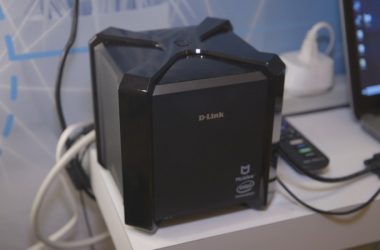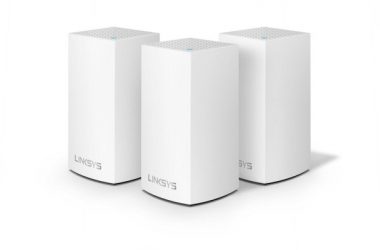
With the economy in a downturn, it’s no surprise that companies have been slashing travel budgets. But at MetLife, officials say the focus is also on employees’ quality of life, keeping them home as much as possible. As a result, the insurance giant has recently made a big push into telepresence technology.
This involves an "immersive video experience," or technology that provides high-end, high-definition visual and audio communications in a completely integrated environment. The goal is to make anyone involved in these meetings feel as if they’re actually in the room with the other meeting participants, regardless of where everyone is physically based.
To achieve this, MetLife is using Cisco TelePresence in three dedicated conference rooms in Chicago, New York and New Jersey, and plans to expand to other offices nationally and internationally this year. The company’s not yet sure how many more offices will use the technology.
"Instead of having to take people away from their families, you walk down to the room and turn on the lights and have your three-hour meeting and it’s extremely effective," says Anthony Nugent, executive vice president of employee benefits sales. He regularly uses telepresence to communicate with his direct reports in Chicago and Somerset, N.J., and the clarity is so good that, he says with a laugh, "Everyone jokes around that they can reach a Coke across the table" from one location to another.
MetLife has seen a direct cost savings as well as better employee time efficiency and a way to help the company meet its "green initiative" goal of reducing its carbon emissions by 20% this year, says Nugent. The company finished its initial telepresence rollout last May and hasn’t yet determined an exact savings, but Nugent estimates the use of the systems will provide double-digit ROI in travel savings alone.
Cisco’s TelePresence promises "life-size" images to make it easy to discern facial expressions.
Different definitions
Depending on how a system is being marketed, there can be a blurry line between high-definition videoconferencing and outright telepresence. Some vendors call a single-screen, high-end videoconferencing system telepresence, says Roopam Jain, an analyst at Chicago consultancy Frost & Sullivan. Others define telepresence as a system with multiple screens and customized furniture.
Telepresence essentially uses the same basic technology as videoconferencing, says Ira Weinstein, an Atlanta-based senior analyst and partner at Wainhouse Research, LLC. "Anyone who says this is not at least in some way related to videoconferencing is selling you something." The difference, he says, is that the video in telepresence has been stepped up to a level of "experience," with greater attention to detail, quality, environment and usability.
A telepresence system at a minimum must include the codecs (chips that convert data), the compression and decompression devices, the cameras, the displays and what Weinstein calls the telepresence user interface or engine. He says one screen can work fine, depending on the experience a company is looking for.
Step into a telepresence studio and you’ll find the typical conference table along with a couple of very large flat-screen displays. The wide screens fill your peripheral vision, Weinstein says, and "your brain sees that as being in the same room" as someone else. "All of this is a way of tricking your mind and making your brain think you’re actually at an in-person meeting.
"These telepresence solutions are about meeting, bonding, teaming and meeting face-to-face without getting on the plane — with five minutes’ notice," Weinstein adds. "I can conveniently meet with people without sacrificing the experience."
Expect to shell out big bucks
The use of both high-definition videoconferencing and telepresence is on the rise, despite the high prices. Telepresence systems can range from over $100,000 to $400,000 for a complete studio setup. There is also a recurring monthly fee on top of that, ranging from a few thousand dollars to upwards of $18,000, depending on the level of service wanted and the amount of network bandwidth that is required.
In comparison, even high-definition videoconferencing systems cost much less, in the range of $6,000.
Given the cost disparity, telepresence systems — including Cisco’s CPS 3000, Hewlett-Packard’s Halo, Teliris’ 6G and Polycom’s HDX 7000 and HDX 9004 — tend to be geared toward larger enterprises that have sky-high travel expenses. For their part, high-definition videoconferencing systems are being eyed more frequently by small and midsize businesses and bank branches.
How to hold productive virtual meetings
You may think having the ability to see someone who is far away with perfect clarity means you’ll have their undivided attention because they can’t tweet or send e-mails as you’re talking. But that doesn’t necessarily mean you’re engaging them. Mike Song, CEO of infoexcellence.com, a business productivity firm based in Guilford, Conn., offers a few tips to ensure virtual meetings will be productive:
Interact every five minutes. Practice what Song calls "five alive," which means you try to interact with people every five minutes by asking a question.
Find a role for everyone. If people read action items or queue up a best practice, they’re much more engaged "because they’re more of a part of the drama," says Song.
Turn the gathering into an action meeting and suggest doing one of the tasks discussed after the meeting, such as finishing an administrative assignment. "Rather than talking about going to a Web site and logging in and do something, if people have their laptops, they can go there during the meeting and do the task," Song says.
Be decisive. Whenever you can make a decision in the meeting, people become more engaged, Song says. Explain how the meeting will be conducted, how the decision will be arrived at during the meeting and when it will be made so you can put it on the agenda to achieve greater momentum.
Recount decisions made during meeting. Get decisions down on paper (or pixels) afterward to make sure action items are followed up on afterward.
Additionally, network provisioning and management costs must be factored in. "Some customer environments already have the excess bandwidth available on their network which they can utilize to run telepresence," Jain says. In other cases, she adds, customers would need to acquire a separate overlay IP network to ensure the availability of bandwidth as well as the quality of service required for telepresence.
Immersive telepresence was a $350 million market in 2008, Jain says. She expects this segment to grow to over $1.7 billion by 2014. In contrast, the videoconferencing systems and services market in 2008 was about $1.9 billion. Currently more than 60% of all videoconferencing systems that are sold are HD-based, says Jain.
"The expectation for 2009 was that telepresence was going to take a hit because of the recession and low capex budgets, but we continue to see high growth numbers from the telepresence vendors," Jain says. "Companies and organizations are looking at technologies that will help them through these times with reduced travel budgets, and they want effective technologies to communicate with global teams. And green initiatives are playing into this too.
Concurring with Jain, Weinstein calls telepresence a very fast-growing segment, but says unit sales are in the single digits right now, in the vicinity of 1%. The real action, says Weinstein, is in sales of "a typical videoconferencing solution, high-definition or not, tossing it into a room and enjoying the experience. Telepresence is growing quickly, but it started off small and is not the lion’s share of the market."
Telepresence, videoconferencing — or both?
At MetLife, the three Cisco telepresence systems cost just under $1 million to install, according to Paul Galvin, VP of enterprise services in the information technology group. Nugent says he uses both videoconferencing and telepresence, depending on what his needs are. Videoconferencing is a better choice for one-on-one situations, such as "if someone is going to do a quick presentation to me," he says, but telepresence is ideal for meetings where participants are located in multiple offices.
Telepresence allows him to have face-to face-contact with a broader group "so it allows me to get to know people better," Nugent says. He runs an organization with people based all around the country and used to require that his direct reports come to New York for quarterly reviews. Now they can stay in their offices and he can discuss business with a wider range of employees.
"Using telepresence allows me to see and virtually interact with more people on my team instead of just my direct reports,” says Nugent. "When we use telepresence for meetings, people who wouldn’t normally be asked to travel to New York have the opportunity to make presentations and get valuable exposure to executive management. It really facilitates face-to-face interaction with a broader cross-section of employees on an economically efficient basis."
MetLife is considering putting a telepresence system at a business processing plant in India to avoid having employees fly over to see it. The company is also looking at ways to utilize telepresence with salespeople across the country. The idea is to have as many people using the system as possible, Nugent says.
"Flying out of Boston for a meeting when I was 20 sounded great, but the sales pitch I always give is we’re respecting the time of the employee," he says. "So if we can give a person the effectiveness of being there and then be home with his family, it’s two wins."
Almost like being there
The law firm of Lathrop & Gage, LLP, is using both high-definition videoconferencing and telepresence. Employees conduct more than 300 meetings every month at the firm’s Kansas City, Mo. headquarters. The 600-person firm is using the HDX 7000 and HDX 9004 systems from Polycom, and a WAN optimization device from Riverbed Technology in six dedicated rooms in Kansas City. There’s also at least one system at each of its 10 other national offices.
"It’s a more meaningful way to conduct [meetings] than over the phone," says CEO Joel Voran, who uses the system about three times a week. While he still tries to make it to all of the firm’s offices twice a year, Voran says use of the Polycom systems has significantly reduced the need for lawyers to fly to Kansas City. Steelhead, the WAN optimization device, identifies network traffic and gives priority to videoconferencing packets to provide adequate bandwidth and ensure high-quality picture and sound.
"The clarity has been impressive," Voran says. "At one of our very first meetings at one of our offices I could see the brand of the beverage someone was drinking and that made the partner sit up and take notice."
Be prepared to fork over at least $100,000 for that in-the-same-room feeling





